All types of cleaning sponges, their pros and cons, nuances of use
 A cleaning sponge is a convenient device that helps you quickly and effortlessly clean various surfaces.
A cleaning sponge is a convenient device that helps you quickly and effortlessly clean various surfaces.
The product can be made of various materials with different characteristics.
The service life of the washcloth and the quality of the cleaning performed will depend on the correct choice and intended use.
Content
What are they?
Sponges are used for wet cleaning of kitchen surfaces, washing dishes and for a number of other jobs. The right choice of tool can be made based on its characteristics.
Foam rubber
Foam rubber models are the most common option, which is present in almost every home. The advantages of such a tool include:
- Ease of use;
- good foam formation when washing with detergents;
- high water absorption capacity;
- versatility;
- suitable for washing various surfaces;
- low cost.
The disadvantages include a short service life (up to 3 weeks).
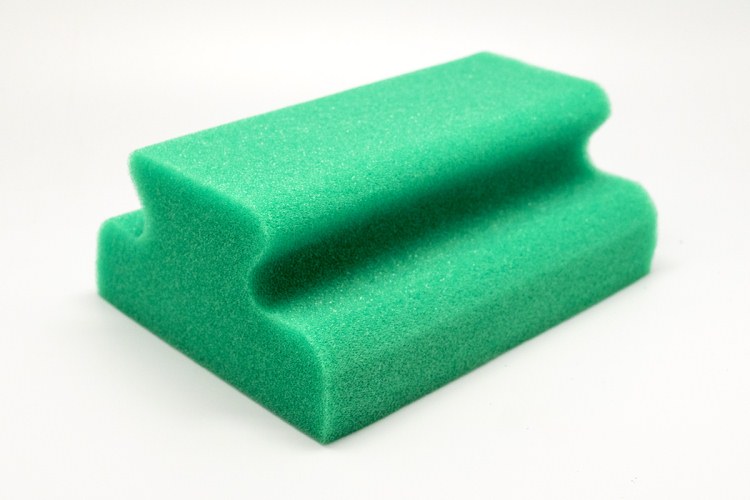
Abrasive
Abrasive sponges have a special hard coating that helps with intensive cleaning.
The advantages of such devices include:
- affordable price;
- ease of use;
- versatility of use (for stoves, sinks, hobs, etc.);
- Suitable for intensive cleaning of stubborn stains.
Minuses:
- cannot be used on surfaces sensitive to intense mechanical stress;
- short service life (less than a month).
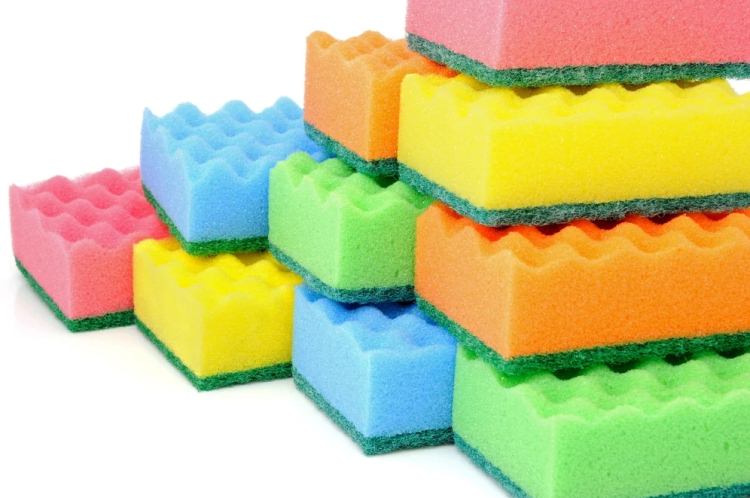
Pulp
Sponges of their cellulose - a practical thing that has many advantages:
- hypoallergenic composition;
- antibacterial;
- universal;
- wear resistance;
- good moisture absorption;
- environmentally friendly.
Cons: price.

Metal
Made in the form of a loose coil of very thin metal wire, sponges are used in cases where it is necessary to cope with complex stains. For example, with the remains of burnt food in a pan.
Pros:
- carrying out intensive cleaning;
- affordable price.
Flaws:
- may leave scratches, therefore it is suitable for treating only those surfaces that can withstand intensive mechanical cleaning;
- quite long service life.

Plastic
Plastic sponges look like a washcloth, consisting of a large number of intertwined thin fibers. They also are quite popular due to a number of advantages:
- suitable for processing delicate surfaces;
- does not leave scratches;
- availability.
Minuses:
- does not absorb moisture;
- does not form foam;
- average duration of service.
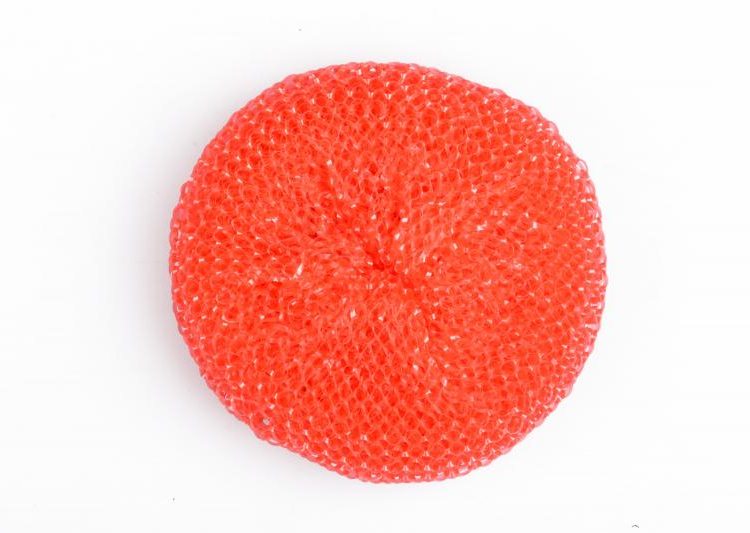
Bamboo
Bamboo sponges are very comfortable. They are made from natural raw materials and have the following advantages:
- hypoallergenic;
- can be used even without detergents;
- gentle treatment of delicate surfaces;
- does not absorb foreign odors;
- copes with moderate dirt.
Minuses:
- high price;
- rapid loss of appearance;
- not very long service life.

Microfiber
The microfiber that makes up the sponge is a fairly new product on the market, which has managed to win its fans.
The advantages of the product include:
- hypoallergenic;
- environmental friendliness;
- versatility;
- good water absorption;
- can be used with a minimum amount of detergents or without them at all.
Flaws:
- high price;
- short service life;
- does not cope with significant pollution;
- gets dirty quickly, absorbing dirt.

Melamine
Melamine is an innovative product. The sponge is in most cases white in color and is used to clean a large number of surfaces from dirt and dust.
Advantages:
- ease of use;
- no need to use detergents – just moisten and wring out the washcloth;
- availability;
- suitable for treating a large number of surfaces, especially in the kitchen;
- high cleaning power.
Peculiarities:
- cannot be used for washing dishes;
- Do not treat hot surfaces or wet them in hot water;
- very short service life - literally one use.
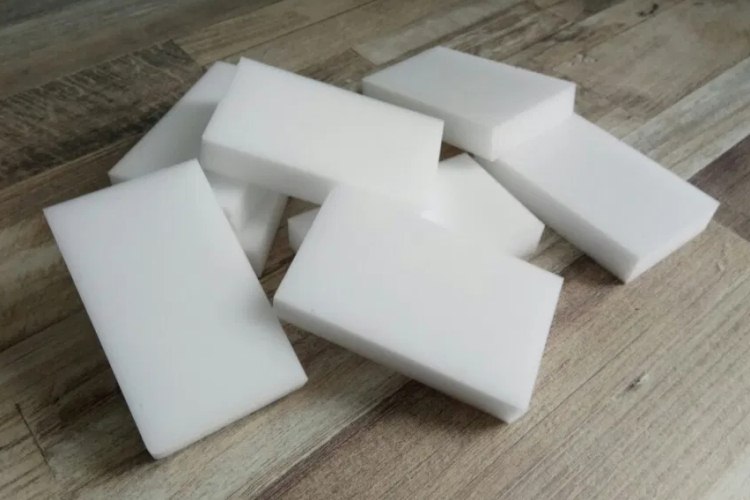
Silicone
Silicone sponges are a new product that not all housewives are familiar with. Outwardly, it looks more like a brush with thick silicone bristles.
This device has many advantages:
- long service life;
- does not absorb pollution;
- easy to clean;
- suitable for processing delicate surfaces and dishes;
- suitable for washing vegetables and fruits;
- allows you to quickly collect pet hair from textiles and clean clothes;
- does not serve as a medium for the development of pathogenic microorganisms.
Cons and features:
- does not hold foam;
- Requires large consumption of detergents.
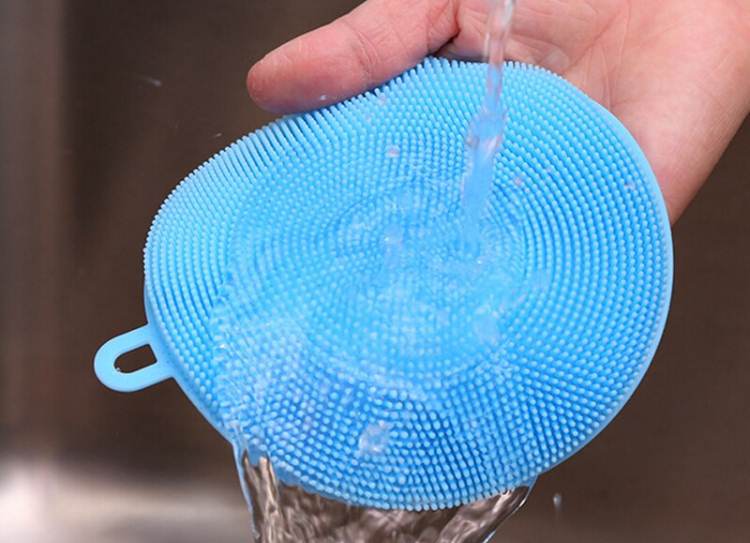
Jute
Jute washcloths are less popular than synthetic ones. The material has its advantages:
- environmental friendliness;
- natural composition;
- can be treated with boiling water;
- can be washed in a machine or by hand;
- foams well;
- retain moisture well;
- service life – up to 3 months.
Minuses:
- not always on sale;
- high value;
- If not properly cared for, mold may develop on the surface.
Jute washcloths come with or without filler.
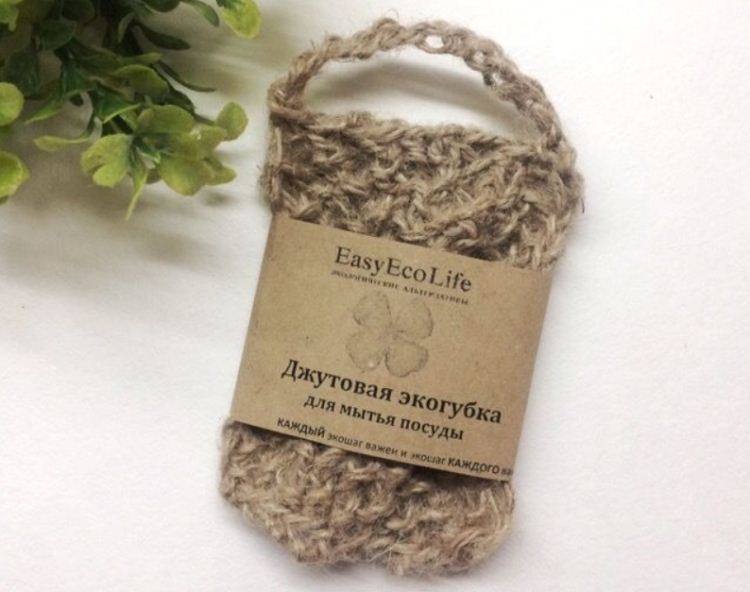
8 selection rules
When choosing a cleaning tool, you rarely manage to get by with just one type of sponge. In most cases, you will need several models, taking into account the specific use and personal preferences. When choosing a sponge, you should consider the following points:
- Size. A large sponge size is not always a plus. The washcloth should fit comfortably in your hand. Some types of sponges can be cut for ease of use, for example, foam rubber and melamine.
- Form. In the vast majority of cases, washcloths are rectangular in shape and look like a bar. But some types are often produced round, for example, plastic and metal models.
- Pen. Some types of washcloths have a handle. This can be convenient in cases where you need to clean hard-to-reach surfaces.
- Number of pieces per package. Sponges that are not designed to last very long are often sold in sets containing several pieces. It's convenient and allows you to save a lot of money.
- Color. Many types of sponges come in a wide range of colors, allowing you to choose the one you like. But some types are only available in certain shades, for example, melamine and metal models.
- Manufacturer. Trust in a trusted manufacturer allows you to purchase a good quality product.
- Compound. The types of materials from which the sponge is made must be indicated on the packaging.
- Price. Cleaning sponges are available in a wide range of prices.
The choice must take into account the type of work for which the tool is being selected.
Application
Using a sponge to clean a room and wash dishes is quite simple, but A number of rules must be followed:
-
 As the sponges become unusable or begin to emit an unpleasant odor, they should be replaced.
As the sponges become unusable or begin to emit an unpleasant odor, they should be replaced.This is especially important in relation to materials that can serve as a site for the development of pathogenic microorganisms.
For foam rubber samples with intensive use, this period is no more than a week.
- It is important to use each washcloth for its intended purpose. For example, if a tool is dedicated to washing plumbing fixtures, it should not be used to scrub dishes.
- Not all sponges require the use of detergents. Melamine, for example, should be used only damp, without cleaning agents; it is especially important to exclude those containing chlorine.
- Sponges that produce good foam do not require a large amount of detergent. It is enough to apply just a small amount of the product onto a moistened washcloth to wash a stack of dishes or wash other surfaces.
- If the washcloth does not form foam and does not retain moisture (for example, metal, plastic), the consumption of household chemicals will not be small.
- It is better not to use melamine washcloths entirely, but to immediately cut off a small part from a large block. If you only need to remove a small stain, you can work with the corner of a sponge, which after cleaning you just need to cut off and throw away.
Tips for a good purchase
You can purchase cleaning sponges in home improvement departments or in an online store. The cost of production depends on several factors:
- manufacturer;
- place of purchase;
- type of washcloth;
- number of products in the package.
To save money, you can purchase universal sponges that combine several materials. This could be a foam sponge, one side of which is more rigid, to clean off complex stains. Another option is a foam sponge, located in a metal braid, etc.
Average price:
 the cheapest washcloths are made of foam rubber; you can buy them in a set of 5 pieces even for 25 rubles;
the cheapest washcloths are made of foam rubber; you can buy them in a set of 5 pieces even for 25 rubles;- melamine ones are sold individually and in sets, costing 2 pieces on average from 50 rubles;
- metal scrapers cost from 20 rubles apiece; if you buy a set, the price is often more favorable;
- jute sponges cost on average from 50 to 250 rubles;
- cellulose washcloths are relatively inexpensive - from 50 rubles for a set of two pieces;
- the cost of microfiber sponges is from 50 rubles for 2 pieces;
- bamboo sponges - up to 300 rubles;
- silicone - from 100 to 300 rubles per piece;
- plastic - from 50 rubles for 3 pieces in a set.
Additional parts provided on some models increase the cost of the product. For example, pens, detergent dispenser, etc.
How to increase service life?
Extending the life of your cleaning equipment saves money. To do this, it is important to adhere to the following rules:
- Do not use sponges to remove stains that you know they cannot handle. For example, wiping off fuel oil stains with a foam sponge.
- After using detergents, the washcloth should be rinsed thoroughly. It is best to do this under running water.
- All types of sponges must be stored dry.
- Most sponges should not be boiled, doused with boiling water or subjected to other intense influences, with the exception of jute.
- Do not leave a dirty washcloth in storage.
Recommendations
Selecting and using washcloths for cleaning will be easier if Pay attention to the following advice from cleaning specialists:
- Sponges that have different uses should be stored separately from each other.
- A vinegar solution can be used to disinfect reusable sponges.
- Deformed, worn-out washcloths lose their functionality and require replacement.
Conclusion
Cleaning sponges are affordable and convenient equipment that allows you to keep your premises and dishes clean. When choosing, it is necessary to take into account the scope of application and functional characteristics of the tool.


